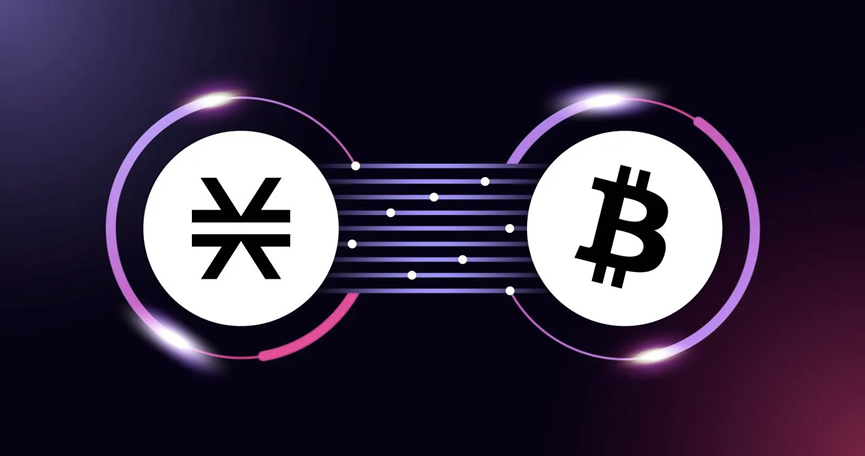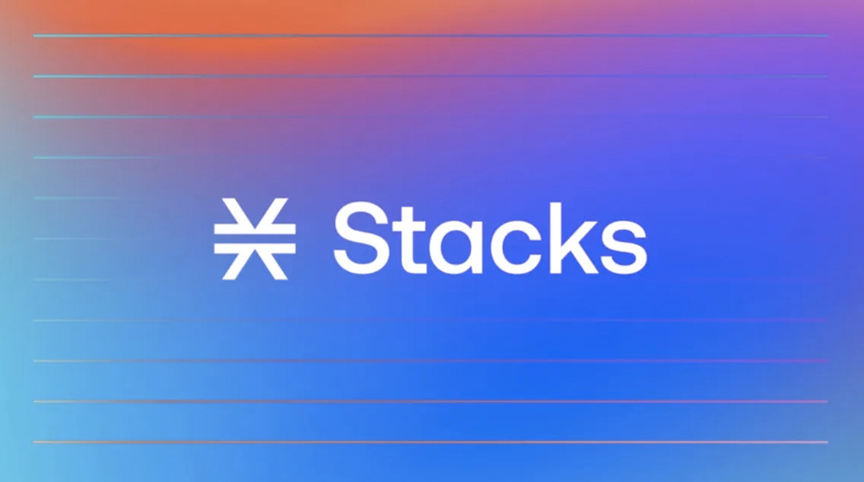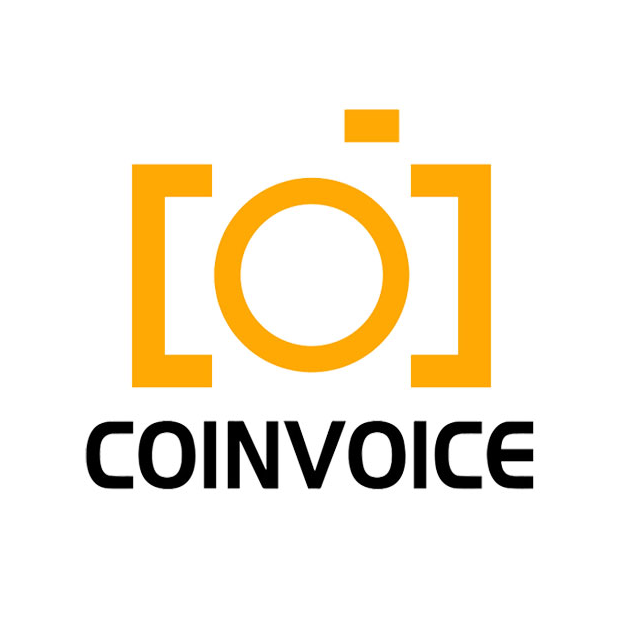Original author: Daniel Li, CoinVoice

Recently, as the crypto industry has entered an uptrend again, people have been paying increasing attention to mining new 100x coins and discovering potential projects. In this round of market conditions, Bitcoin-related projects or tokens have become the focus of many peoples attention. Whether it is ORDI or STAS, they have created their own myths.
The market currently generally believes that the start of the next bull market will be dominated by Bitcoin, and related projects surrounding Bitcoin will play an important role in promoting it. However, relying solely on Inscription or MEME coins cannot support Bitcoin to lead the entire bull market, and the market needs to further explore the potential of Bitcoin. As a representative of Bitcoin smart contracts, Stacks will assume more responsibilities, which will further unleash the potential of Bitcoin smart contracts and fully prepare for the next round of bull market.

Stacks A complete Bitcoin Layer 2 solution
The Stacks public chain was co-founded by Muneeb Ali and Ryan Shea in 2013. It was originally named Blockstack and later renamed Hiro Systems PBC. The project raised funds under Reg A under the supervision of the SEC, becoming the first blockchain project to comply with SEC regulatory standards, which has also won it widespread recognition and trust. To date, Stacks has raised five rounds of funding, totaling $88 million.
Stacks various versions
Stacks version 1.0: Stacks version 1.0 is an early version of Stacks designed to provide users with decentralized authentication and storage services. This version was founded in 2013 and is the initial exploration and development of the Stacks project in the field of decentralized applications.
Stacks version 2.0: Stacks 2.0 version was officially launched on January 14, 2021. This version introduces a consensus mechanism called “PoX” that enables the Stacks public chain to interoperate with the Bitcoin blockchain and provide higher security and scalability.
Stacks version 2.1: Stacks version 2.1 was officially activated on March 20, 2023. The new version strengthens the connection to Bitcoin, including Stacking mining efficiency improvement, Clarity language upgrade, better bridging function, decentralized mining, etc. This release supports sending Stacks assets directly to Bitcoin addresses, strengthening the connection to Bitcoin.
Nakamoto version: Stacks is about to launch a version called Nakamoto in Q4 2023, which will transform Bitcoin into the basic settlement layer and reserve asset of the open metaverse. An asset called “sBTC” will be launched, which can be minted in a decentralized manner on Stacks and supports a 1:1 exchange for actual Bitcoin assets.

Stacks technical principles
Stacks adopts a unique side chain model that is different from traditional side chains. It integrates with the Bitcoin main chain by submitting anchor transactions that contain digests and additional information of block header information on the Stacks chain to ensure its immutability and allow applications and smart contracts to run on the Bitcoin main chain. Settlement transaction.
Additionally, Stacks has its own completely independent chain and programming language, Clarity. Stacks enhances Bitcoin’s first layer functionality by empowering developers to design dynamic smart contracts on the second layer. It achieves a mutually beneficial connection between the two layers, placing complex calculations and interactions on the second layer, while relying on the Bitcoin base blockchain to ensure the security and finality of transactions. This innovative architecture enables Stacks to expand the uses and functionality of Bitcoin, providing new opportunities for developers to build decentralized applications and smart contracts.
Technical features of Stacks
Proof of Transfer (PoX) consensus algorithm: Stacks uses a unique PoX consensus algorithm, in which miners and validators are two different roles. Validators stake STX to mine Bitcoin, while miners stake BTC on the Bitcoin main chain to mine STX. This consensus algorithm ensures the security and decentralization of the Stacks network and transfers the value of Bitcoin into the Stacks ecosystem through the mining process. The innovation of the PoX consensus algorithm is to increase the security and stability of the Stacks network through the value transfer of Bitcoin, while providing a sustainable economic model.
Smart contract language Clarity: Clarity is a smart contract language on Stacks that is safe, verifiable and has no side effects. It uses a static type system and functional restrictions to ensure that the contract has no ambiguous behavior during execution. Claritys design reduces the likelihood of contract errors and provides reliability and auditability. Its rich type system and side-effect-free programming paradigm enable developers to build complex contract logic and increase contract predictability and security.
Gaia Storage System: Gaia is a decentralized storage solution provided by Stacks. It focuses on the ownership and privacy protection of user data, and users can associate their data with their identities and use it in decentralized applications. Gaia ensures data privacy and security through encryption and flexible storage provider selection. Storing user data off the blockchain improves the performance and throughput of Stacks applications.
sBTC: sBTC is a project in the Stacks ecosystem that implements Bitcoin’s programming capabilities and decentralized financial applications. sBTC introduces Bitcoin assets on Stacks through a trustless two-way peg mechanism. This allows users to use complete smart contracts on Stacks and trade Bitcoin assets in a decentralized environment. The introduction of sBTC brings more liquidity and funds to the Stacks ecosystem, driving the development and growth of the ecosystem.
Stacks unlocks more of Bitcoin’s potential
The popularity of Ordinals inspired a culture of Bitcoin construction, and as more developers poured into the Bitcoin ecosystem, Bitcoin fundamentalists became increasingly resistant. They believe that excessive development of Bitcoins functions will lead to changes in Bitcoins store of value characteristics, which is detrimental to Bitcoins long-term development. Bitcoin builders believe that Bitcoin, as the first public chain, cannot just be a value public chain, it needs to bear more responsibilities. In the past, both sides have insisted on their own views and neither seemed able to convince the other.
Until recently, thanks to the craze for Bitcoin spot ETFs, the narrative surrounding Bitcoin has become the current mainstream trend, and the sticking points that have long plagued Bitcoin fundamentalists and builders seem to be on the verge of reconciliation. Just last month, at the “Bitcoin Builders Hong Kong” event co-hosted by Stacks, ALEX, Xverse and Spartan Group, Yan Ma, a partner at Spartan Group, expressed his views on this. He believes that Bitcoin’s store-of-value properties as an asset can be discussed separately from other functions. The original important features have not changed at the L1 level and will not change, but at L2 or other levels, Bitcoin has more possibilities.
Currently, among the many second-layer solutions for Bitcoin, Lightning Network and Stacks stand out. The current focus of the Lightning Network is on token payment and asset on-chain areas, while Stacks, as a representative of Bitcoin smart contracts, has unleashed more potential of the Bitcoin public chain. Stacks respects the characteristics of Bitcoin as a value public chain and implements functions similar to Ethereum. Developers can build various smart contracts and decentralized applications on the Stacks public chain while enjoying the security brought by Bitcoin. characteristics and decentralization.
What changes has Stacks brought to the Bitcoin ecosystem?
Enhanced Bitcoin functionality: By extending Bitcoin’s scripting capabilities, Stacks enables decentralized finance (DeFi), the Metaverse, Web 3.0 and other use cases. These innovations have made Bitcoin more widely used in more fields. Developers can build dApps that use real Bitcoin for payments, staking, token issuance, non-fungible token (NFT) transactions, and decentralized autonomous organizations (DAO) operations. Such functional enhancements unlock the potential of Bitcoin and open up new possibilities for the development of Bitcoin in the fields of decentralized applications and decentralized finance.
Improved Bitcoin security: Stacks’ consensus mechanism and technical improvements help improve Bitcoin’s security. By interacting with the Bitcoin main chain, Stacks transactions not only inherit the probabilistic immutability of Stacks, but also inherit the security of Bitcoin. This allows participants in the Bitcoin ecosystem to enjoy a more reliable and secure transaction environment, enhancing overall trust. Improved security is crucial to the further development and widespread application of Bitcoin.
Improved Bitcoin transaction efficiency: Stacks’ technical improvements improve Bitcoin’s transaction throughput and dApp responsiveness while maintaining the security of Bitcoin settlements. This means that Bitcoin transactions can be confirmed and processed more quickly, improving overall transaction efficiency. This is a very important improvement for the growing number of Bitcoin users and transaction volume.
Built a native BTC ecosystem: Stacks built a native ecosystem for Bitcoin. By finding a way to perform operations directly on Bitcoin, Stacks enables scalable transactions and general-purpose smart contracts. This native BTC ecosystem makes Bitcoin the core asset of the entire ecosystem, further promoting the widespread application and development of Bitcoin. Bitcoin holders can participate in a variety of DeFi activities, governance, and decision-making, and enjoy greater liquidity and usage options.
Stacks ecological project inventory
The purpose of Stacks is to build a programmable, composable, secure and decentralized ecosystem that inherits Bitcoin. With the resurgence of Bitcoin-related narratives, the Stacks ecosystem has also experienced an explosion of liquidity. So far, the total lock-up volume (TVL) of Stacks has exceeded US$20 million, which is nearly half of its historical high. In addition, the number of wallets and smart contracts has increased significantly. It is expected that as the Bitcoin market starts again, the Stacks ecosystem will attract more projects and developers in the future. The following are several Stacks ecological projects worth paying attention to.

ALEX
Bitcoin’s smart contracts have always been the “Holy Grail” in the field of encryption. However, due to the complexity of the bridging process of BTC assets, the liquidity of BTC assets has not been fully developed, and the BTC ecosystem still contains huge potential for the crypto lending market. ALEX is an open source DeFi protocol based on the Stacks public chain. The goal is to provide a complete DeFi product for the Bitcoin network, much like Uniswap does on Ethereum.
The Stacks public chain integrated at the bottom of ALEX aims to connect native Bitcoin to obtain the highest security, while also supporting decentralized applications and smart contracts. Thousands of transactions on the blockchain generate a hash on Bitcoin, and as part of the consensus, Stacks transactions are automatically settled on every Bitcoin block, thus connecting the Bitcoin network and Stacks Blockchain and expands the capabilities of Bitcoin. It is precisely because of the aforementioned characteristics of Stacks that it is possible for ALEX to connect to native Bitcoin at low cost.
The current mainnet version of ALEX includes Swap, lending, staking, revenue mining and Launchpad. In addition, as BRC 20 becomes popular, ALEX also launched the BRC 20 order book exchange. $ALEX is the native token of Alex Labs and is also the platform’s reward medium for providing liquidity and staking. The current price of $ALEX is $0.06036.
Xverse
Xverse is a company that provides a Bitcoin Web3 wallet, and their wallet supports Ordinals and BRC-20 tokens. The wallet uses cold storage security technology to ensure the security of user assets. Through Xverse, users can easily manage Bitcoin assets and Stacks-based assets, including Bitcoin and Bitcoin Non-Fungible Tokens (NFTs).
Xverses wallet user interface is designed to be simple and easy to use, similar to other Ethereum Virtual Machine (EVM) compatible wallets. It uses mnemonic words for backup and recovery, lowering the threshold for use. Additionally, Xverse allows users to securely manage assets such as Bitcoin on layer 1 and layer 2 networks like Stacks. Once the wallet is created, two addresses are automatically generated, one for receiving and sending Bitcoin assets, and the other for managing assets on the Stacks network.
In addition to meeting user needs for Bitcoin and Stacks-based asset management, Xverse also has built-in"stack"Function, users can earn Bitcoin income by staking Stacks tokens (STX). This provides users with an avenue for additional revenue. Xverse is currently planning to implement fast BTC payments through the Lightning Network and sBTC. Once implemented in the future, Xverse will undoubtedly become the most convenient Bitcoin Web3 wallet in the Stacks ecosystem.
Gamma
Gamma is the largest NFT trading platform in the Stacks ecosystem. It consists of three core products: NFT market, Launchpad and social platform. Gamma aims to bring collectors, creators, and investors together in the Bitcoin ecosystem to explore, trade, and showcase NFTs.
With the rise of Ordinals, NFT activity on Stacks has gradually increased. The Gamma platform supports Stacks ecological token transfers and plans to support Stacks NFT transactions in the future. Over the past period of time, transaction volume on Gamma has experienced multiple consecutive weeks of growth. Users can use Gamma bot to mint unique digital works and collect or sell them. Using Gamma.io’s code-free Bitcoin NFT creation tool, users can successfully create one in just minutes.
GAMMA is the native token of Gamma and is a protocol designed for non-custodial, automatic and active management of centralized liquidity. Users who stake GAMMA can receive 10% of the fees in all liquidity pools on Gamma as a reward. The current GAMMA token price is $0.2327.










